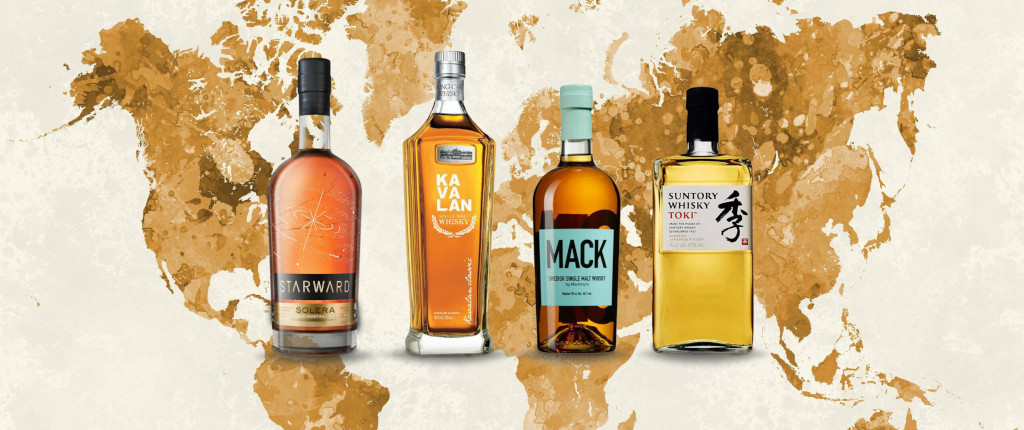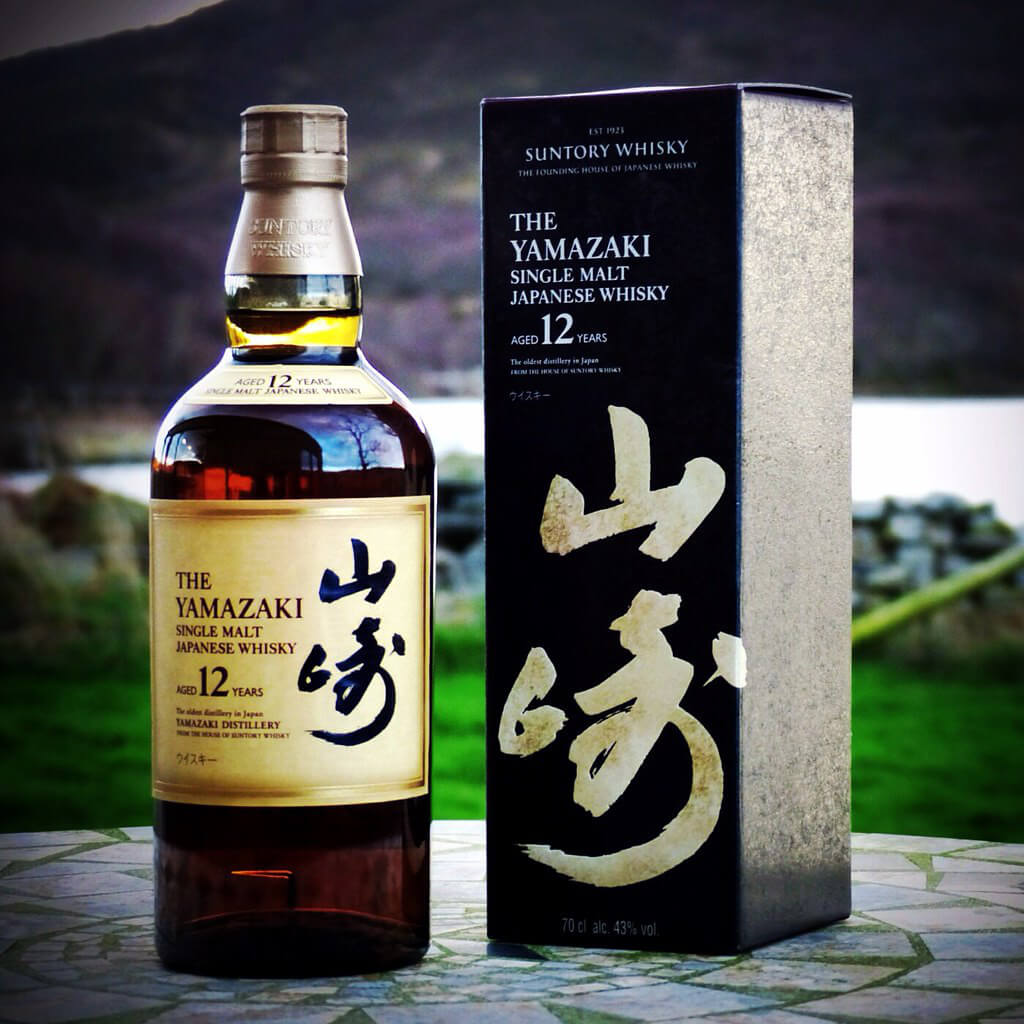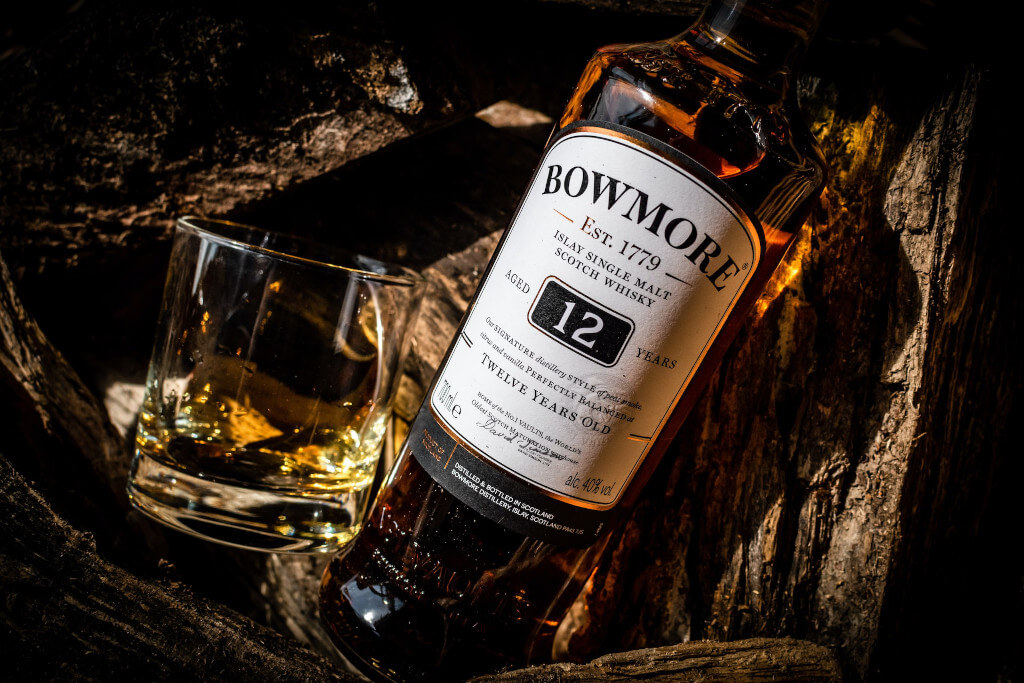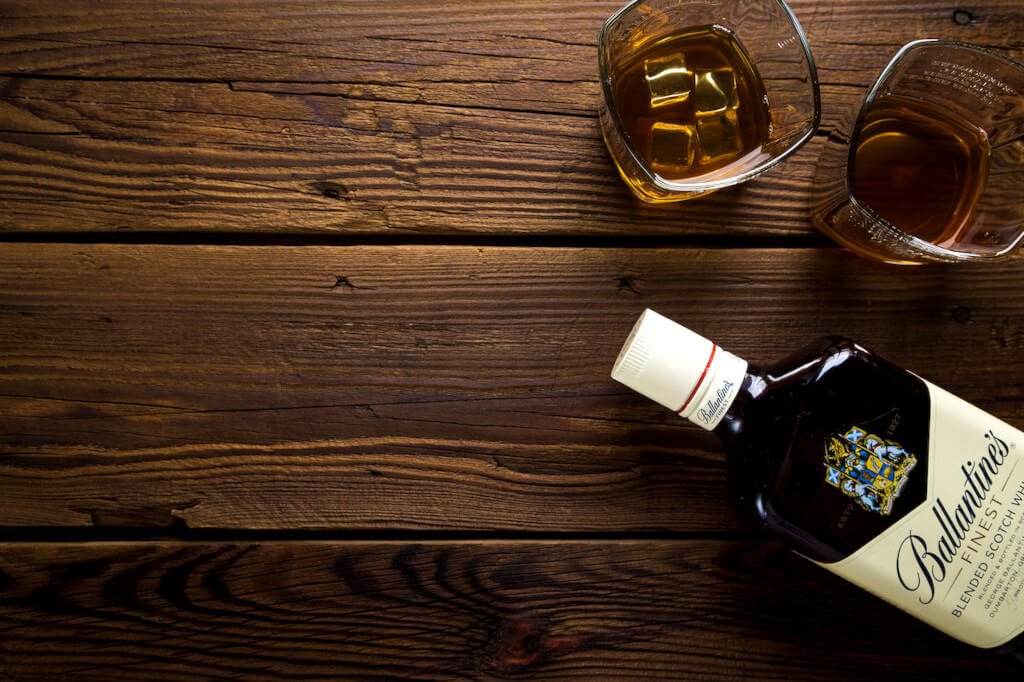Whiskey, in the simplest terms, is a distilled spirit created by distilling a mash of fermented grains like barley, corn, rye, wheat, or a combination of these. In most cases, whiskey is matured in used sherry or charred white oak barrels. To be classified as whiskey or one of its subcategories, a spirit must meet several criteria. While there are many rules about this well-known spirit, the opportunities for innovation, originality, and variety in flavor are virtually limitless.
Whiskey Varieties
Depending on where and how the spirit is distilled, whiskey falls into several subcategories. And even further sub-types exist, each requiring a unique set of steps and materials. This, however, is the exciting part, so let’s examine the many kinds of whiskey and the contents of a bottle.
American Whiskey Varieties
Any whiskey that is distilled in the United States of America is considered American whiskey. These include whiskies distilled from grains like rye, wheat, and corn and containing at least 51% of that grain. Two of these whiskeys—bourbon and Tennessee whiskey—can only be found in the United States.
Although most bourbon comes from Kentucky, the spirit can be distilled in any of the 50 states. As you can expect, there is a wide variety of bourbon, each with its flavor profile. In our guide to bourbon, we discuss the requirements a spirit must meet to be called bourbon. Sweeter than other types of whiskey, bourbon typically features hints of vanilla, oak, and caramel in its flavor profile. Some may taste more gritty, while others may have strong aromas of baking spices like cinnamon or nutmeg. There is, of course, a great deal of flavor variation among different bourbon brands; we may suggest a few of our favorites.
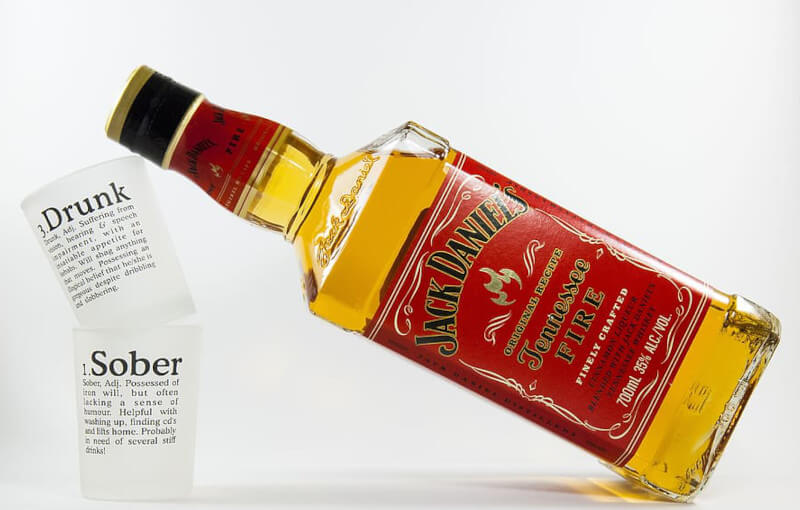
Tennessee whiskey, a subset of bourbon, is made legally in the state of Tennessee. The Lincoln County Process involves filtering Tennessee whiskey through sugar maple charcoal before aging it. This smoothes out the intensity and gives it its flavor profile. Charcoal or charred wood tones join the more typical whiskey flavors of toasted oak, caramel, and vanilla.
At least 51% of the mash bill in rye whiskey comes from rye grain. When made in the United States, rye must go through the same charring process as bourbon and be matured in new oak barrels. Rye whiskey is typically known for its tingling spiciness and its lighter body compared to other types of whiskey. Rye whiskey, which takes its name from the grain used to make rye bread, is known for being bitter and peppery.
Wheat whiskey’s main ingredient is wheat. Wheat whiskies are some of the smoother whiskies, with flavors like honey, vanilla, dried fruit, spice, and toffee. Also, the mild sweetness of wheat whiskies makes them comfortable to drink.
Corn whiskey and white whiskey (sometimes known as “moonshine”) are essentially the same product. These whiskies are distilled from corn mash to a maximum of 160 proof and then consumed immediately. White whiskey, which is unaged, clear, and extremely potent, is also known as moonshine. If you can handle the high proof, the fermented maize likely has floral and sweet flavors.
Irish Whiskey
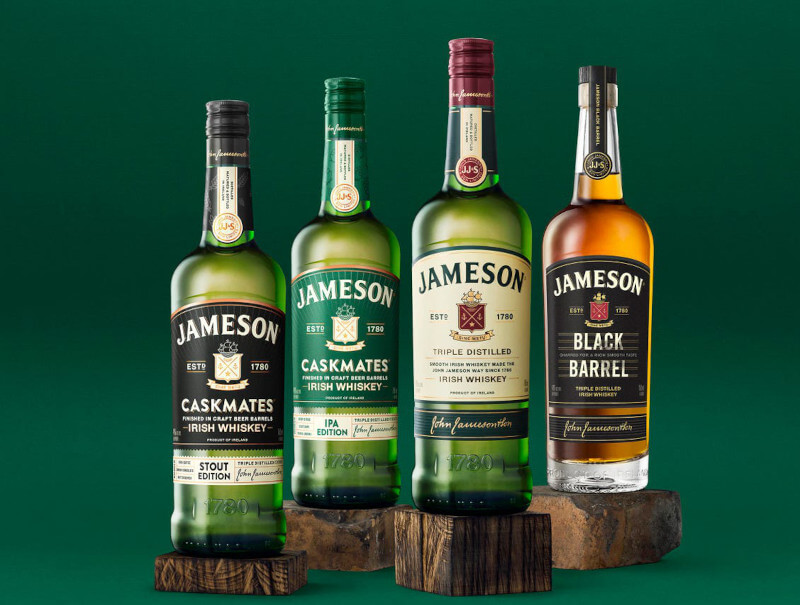
Irish whiskey must be made in Ireland from malt, cereal grain, and barley before it may be called Irish whiskey. After that, it needs to spend at least three years aging in oak barrels. When Irish whiskey is matured in nonstandard barrels like sherry casks or rum casks, the spirit’s more nuanced malt flavor emerges.
Scotch Whiskey
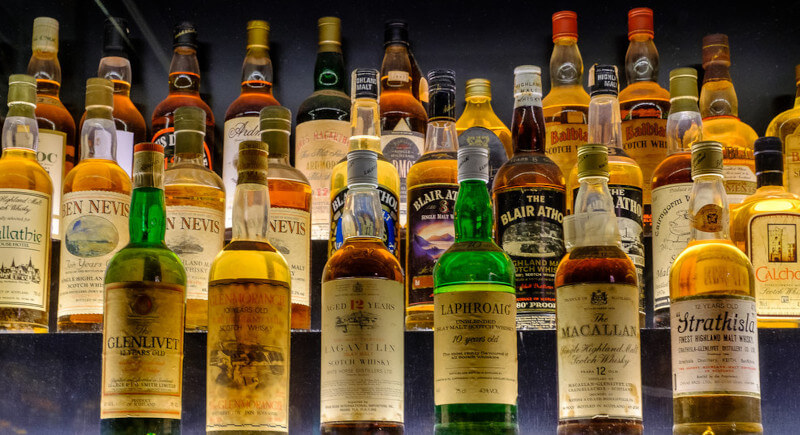
Scotch has a minimum three-year aging period in oak casks and must be distilled, matured, and bottled in Scotland. Five distinct areas in Scotland—the Highlands, the Lowlands, Campbeltown, Islay, and Speyside—are known for producing high-quality Scotch. Scotch’s signature smokiness comes from peat, a rich moss used in the drying process of the malted barley. When you consider the distinctions between single and blended malts, Scotch has a more nuanced flavor profile than other whiskies.
Whiskey from Canada
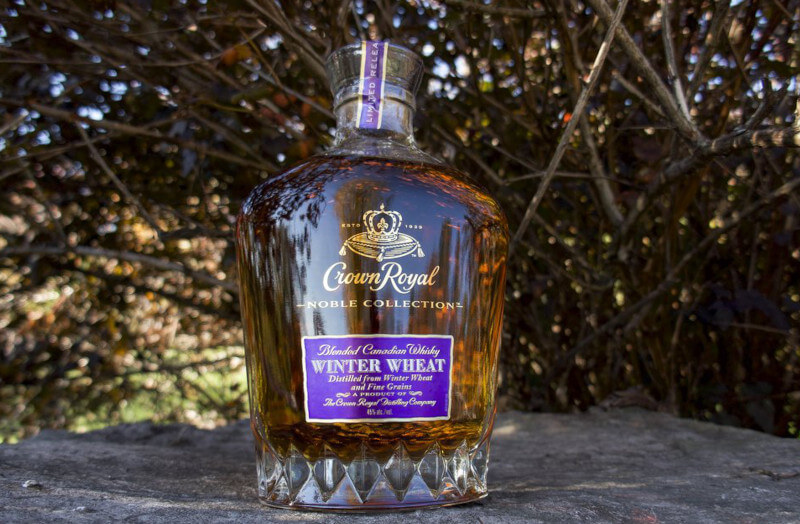
This whiskey must be made in Canada, matured for at least three years, and bottled at no less than 40% alcohol by volume (ABV). Canadian whiskey’s flavor characteristics can be as varied as the whiskey itself thanks to the addition of caramel and other flavorings.
Whiskey from Japan
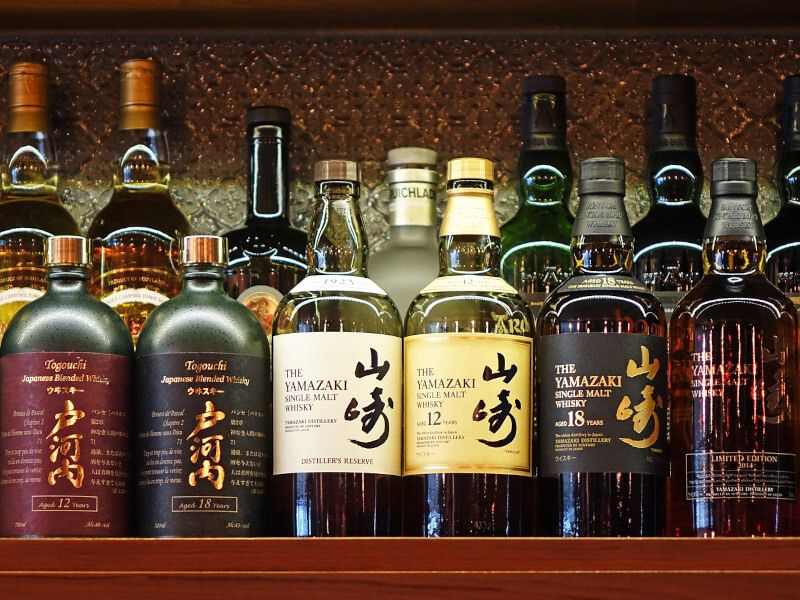
Whiskey with a Japanese label is usually bottled in Japan, but it doesn’t mean it was distilled or aged there. Double distilling malted and/or peated barley and aging it in wood barrels, typically built from native Japanese oak, is a nod to the Scotch heritage. Single malts and blends of this type of whiskey are typically drier, smokier, and peatier than other types of whiskey.
Whisky Varieties Other Than Single Malt
Whiskey labeled as “single-malt” has only one type of malted grain and can only be produced at one distillery. Unless it is a single-cask whiskey, the whiskey in a bottle of single-malt whiskey may have come from a variety of barrels. The purpose of making a single malt is to generate flavors that are uniquely representative of a particular distillery, however regional flavor profiles might differ greatly.
Other Whiskey Varieties: Blends
One or more high-quality straight or single malt whiskies are combined with additional spirits and maybe even other ingredients to create blended whiskey. Single malts from more than one distillery can be combined to create a blended whiskey.
Corn Whiskey with Mexican Ancestry (Abasolo)
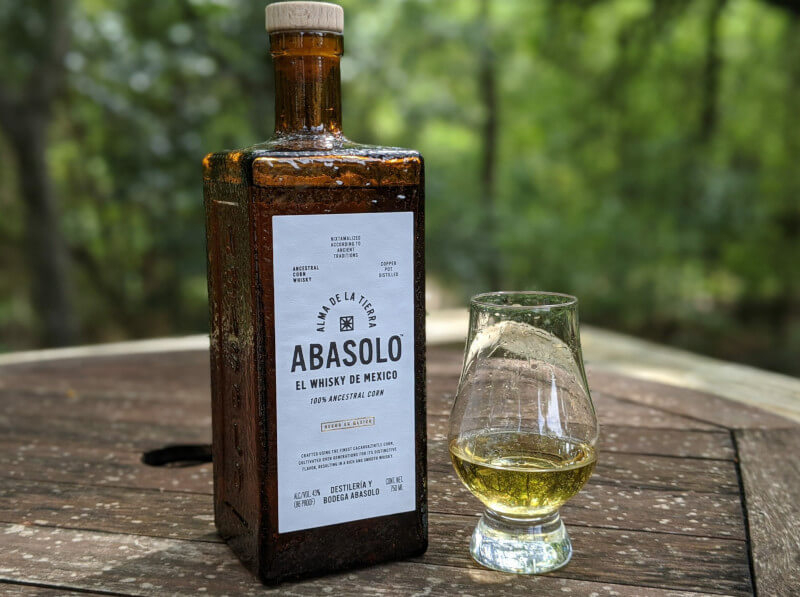
Mexican whiskey may sound strange at first, but the country is home to hundreds of native varieties of corn, an essential ingredient in bourbon. The makers of Montelobos Mezcal have released a whiskey made entirely from Mexican corn; they call it Abasolo Ancestral Corn Whiskey.
Ancestral Cacahuazintle, a non-GMO species grown for millennia by farmers in Jilotepec de Abasolo, is used in nixtamalization, a traditional Aztec/Mayan alkaline-cooking method that claims to reveal “the deepest notes of this ancestral ingredient.” To create a whiskey with distinct corn flavors interwoven with subtle undertones of vanilla, toffee, and leather, the juice is double-distilled in copper pot stills before being finished in wood.
Southern Tier’s Pumking Whiskey
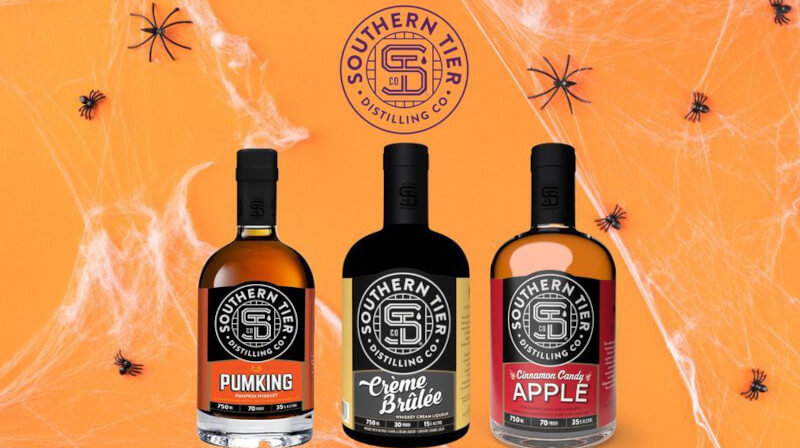
There are probably some people out there who really like Southern Tier’s Pumking whiskey, and they’ll be disappointed to learn that it placed last in our evaluation. However, here’s the thing: it causes strong disagreement between people.
Here’s why this whiskey doesn’t do flavored whiskies any favors: There will always be people who adore it and some who can’t stand so much as a whiff of it.No wonder flavored whiskey has a terrible record if that’s your first experience with it.
It’s impossible to deny that the pumpkin flavor dominates here, even if you enjoy it. As a result of the abundance of pumpkin pie spices and graham cracker undertones, the whiskey’s true identity as pumpkin whiskey is somewhat obscured. The fact is, it could just as easily be a pumpkin spice latte. Sorry, Pumking aficionados, but this one’s a bit too much for what we’re looking for in a nice flavored whiskey: obvious flavors that don’t dominate the fact that you’re drinking whiskey.
Cider made by Evan Williams in Kentucky
Even calling Evan Williams Kentucky Cider flavored whiskey seems like a stretch, but here we are. Why do we have this problem with it? Although it contains both whiskey and apple cider liqueur, its low 34 proof makes it more reminiscent of a weak liqueur than a whiskey.
While the flavor isn’t offensive, it’s also not reminiscent of whiskey. It makes it reasonable that it wouldn’t be available until September. In the autumn, when you want something inexpensive, light, and reminiscent of the perfect slice of apple pie, this is the beverage for you. If you serve it over ice, it’s not bad, but it’s also not what you expect from whiskey. Doesn’t flavored whiskey still need to remain whiskey at its core?
What Should You Try First, if Any of These?
The most exciting aspect of whiskey is trying new kinds and flavors to find your favorites. If you’ve never tried whiskey before, we suggest starting with something easy to consume, such as bourbon or wheat whiskey. You can dilute your whiskey with a little water or an ice pebble if it’s still too strong. However, don’t use too much water, as this will dull the dish’s flavor. Confused as to how to consume it?


